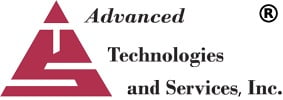The National Telecommunications and Information Administration (NTIA) has recently proposed a guideline for State Map Challenges, providing State Broadband leaders the option to follow the proposed guidelines or develop their own challenge process. It is anticipated that several states will adopt these guidelines, with states such as Louisiana already announcing their decision to adopt the guidelines once officially released.
The purpose of the state challenge process is to allow for challenges from "a unit of local government, nonprofit organization, or broadband service provider" against the state's initial determination of eligibility for BEAD funding, including identifying unserved or underserved locations along with inaccurate Community Anchor Institution (CAI) data.
Along with this, the new proposal included a methodology for speed challenges, which was previously omitted in the original FCC Fabric challenge process. We’ve outlined some of them below;
Speed tests can take four forms:
- A reading of the physical line speed provided by the residential gateway, (i.e., DSL modem, cable modem (for HFC), ONT (for FTTH), or fixed wireless subscriber module.
- A reading of the speed test available from within the residential gateway web interface.
- A reading of the speed test found on the service provider’s web page.
- A speed test performed on a laptop or desktop computer within immediate proximity of the residential gateway, using a [commonly used speed test application | a speed test application approved by the Eligible Entity | speed test application from the list of applications approved by NTIA | a peer-reviewed speed test developed by a research group.]
Speed Test Requirements
- Only speed tests conducted between the hours of 7 pm and 11 pm local time will be considered.
- Each location must conduct three speed tests on three different days; the days do not have to be adjacent.
- The median of the three tests (i.e., the second highest (or lowest) speed) is used to trigger a speed-based (S) challenge, for either upload or download. For example, if a location claims a broadband speed of 100 Mbps/25 Mbps and the three speed tests result in download speed measurements of 105, 102, and 98 Mbps, and three upload speed measurements of 18, 26, and 17 Mbps, the speed tests qualify the location for a challenge, since the measured upload speed marks the location as underserved.
- Speed tests may be conducted by subscribers, but speed test challenges must be gathered and submitted by units of local government, nonprofit organizations, or a broadband service provider.
- Generally, only speed tests by subscribers who subscribe to the fastest available reliable broadband service, based on the FCC National Broadband Map data, will be considered a valid challenge. For example, if a location is served by 100 Mbps fixed wireless and 500 Mbps fiber, conducting a speed test on the fixed wireless network that shows an effective speed of 70 Mbps does not change the status of the location from served to underserved.
- A service provider may rebut an area speed test challenge by providing speed tests, in the manner described above, for at least 10% of the customers in the challenged area. The customers must be randomly selected. Providers must apply the 80/80, i.e., 80% of these locations must experience a speed that equals or exceeds 80% of the speed threshold. For example, 80% of these locations must have a download speed of at least 20 Mbps (that is, 80% of 25 Mbps) and an upload speed of at least 2.4 Mbps to meet the 25/3 Mbps threshold and must have a download speed of at least 80 Mbps and an upload speed of 16 Mbps to be meet the 100/20 Mbps speed tier.
Our Thoughts
One highlight from this challenge guideline is the requirement for entities challenging speeds to test between 7pm and 11pm for three separate days, with the median of the three tests being counted.
This requirement implies that if an entity chooses to use webpage speed tests, they must have a subscriber log onto a network-connected device and perform speed tests themselves. However, this can present challenges for operators seeking to obtain the required number of tests within the specified timeframe while also requiring active interaction with their subscribers. Additionally, it remains to be seen how accurately this new methodology reflects a subscriber's actual speeds compared to the previous USAC Connect America Fund performance measure guidelines, which required one speed test every hour between 6pm and 12pm for seven consecutive days.
Second, a provider that would like to offer a rebuttal would need to test 10% of the service area being challenged. Many rural providers don’t have access to technology that allows them to directly test specific Customer Premise Equipment (CPE) in a short time frame, which may cause a roadblock for providers who need to disprove a challenge.
Last, one interesting challenge type that we noticed was:
|
Challenge Class |
Detail |
|
CAI Eligibility Determination |
NTIA will permit challenges to the classification of a CAI as eligible for BEAD funds (i.e., challenges that a CAI does not receive at least 1 Gigabit broadband speeds). |
Speed tests will be crucial in determining the eligibility of Community Anchor Institutions (CAI) for BEAD funds. Given the common issue of PON gigabit speeds falling short of their advertised 1,000mbps, we anticipate a high level of interest in this challenge. It will be up to county offices and ISPs whether they’ll pursue these speed challenges to identify which CAIs will be considered served.
It is important to note that these requirements are not the final version of the NTIA's guidance, and it remains to be seen how they will change in the final version. Moreover, each state will have to review the final version when it is released and decide whether or not to adopt this model.
To obtain dependable speed challenge data, ATS offers a straightforward solution for testing any specified service area. Contact us today for assistance.
